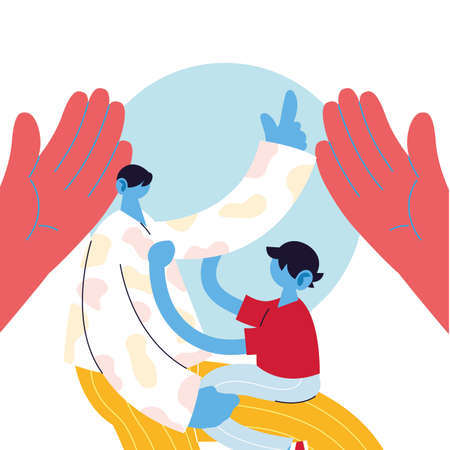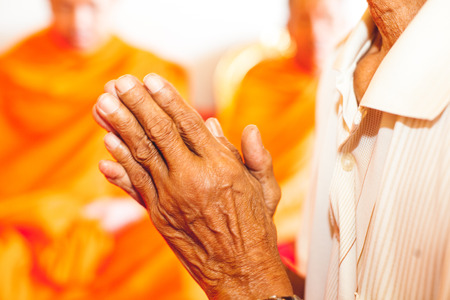1. Understanding the Spiritual Needs of Immobile Elderly in India
In India, spirituality and religious practices are deeply woven into the fabric of daily life, especially for the elderly. As individuals grow older, their connection to faith and spiritual routines often becomes a vital source of comfort, strength, and purpose. For many seniors, performing rituals, chanting mantras, reading scriptures like the Bhagavad Gita or Ramayana, and participating in community prayers are not only acts of devotion but also essential for emotional well-being. However, when mobility becomes limited due to age or health conditions, these cherished practices can become challenging. Understanding the unique spiritual needs of immobile elderly Indians requires sensitivity to their cultural context and personal beliefs. Family members and caregivers should recognize that even when physical participation is difficult, the desire for spiritual fulfillment remains strong. Maintaining a sense of connection to religious traditions—be it through listening to bhajans, watching televised pujas, or engaging in guided meditation—can greatly enhance their quality of life. In Indian society, where joint families and intergenerational bonds are common, supporting the spiritual needs of elders is seen as an act of seva (selfless service), reinforcing respect and gratitude towards them. By acknowledging the importance of spirituality in the lives of immobile elderly people, we can create an environment that nurtures their inner peace and upholds their dignity.
2. Traditional Religious Practices Adapted for Mobility Constraints
In India, religious and spiritual activities play a vital role in the daily lives of elderly people, offering comfort, hope, and a sense of community. However, for seniors with limited mobility, participating in temple visits or group gatherings can be challenging. Fortunately, many traditional practices such as puja, chanting mantras, and listening to devotional music can be easily adapted for home settings, ensuring that the immobile elderly remain connected to their faith and culture.
Puja at Home
Puja is an integral part of Indian spirituality and can be performed at home with a few modifications. Family members can assist the elderly by setting up a small altar within easy reach, using lightweight idols and essential items like incense sticks (agarbatti), lamps (diya), and flowers. If bending or sitting on the floor is difficult, a table or shelf at wheelchair height can make participation comfortable.
Chanting Mantras and Prayers
Chanting mantras is a deeply spiritual practice believed to bring mental peace and positivity. For the immobile elderly, family members or caregivers can recite mantras together, use audio recordings, or even video calls with relatives to create a communal atmosphere. Visual aids with large-font texts of common prayers such as the Gayatri Mantra or Hanuman Chalisa can also be helpful.
Listening to Devotional Music
Listening to bhajans, kirtans, or shlokas is both soothing and spiritually uplifting. In today’s digital age, access to devotional content is easier than ever through smartphones, radios, or television channels like Aastha TV or Sanskar TV. Below is a table outlining some accessible resources:
| Activity | Accessible Method | Popular Resources |
|---|---|---|
| Puja | Home altar at accessible height | Lightweight idols, battery-operated diyas |
| Mantra Chanting | Audio/video recordings | Gayatri Mantra apps, YouTube playlists |
| Devotional Music | Radio/TV/Smartphone | Aastha TV, Spotify Bhajan playlists |
Cultural Sensitivity and Personal Preferences
It is important to respect individual traditions based on region, language, and family customs. Some may prefer Tamil devotional songs like Thiruppugazh while others resonate with Punjabi shabads or Marathi abhangs. Encouraging elders to express their preferences ensures that spiritual activities remain meaningful and comforting.
Community Support at Home
If possible, inviting local priests (panditji) for brief home visits or arranging virtual satsangs via WhatsApp groups helps maintain social and spiritual bonds. This not only keeps religious routines alive but also gives elders a sense of belonging within their community despite physical limitations.

3. Utilising Technology for Virtual Darshan and Participation
With the increasing accessibility of digital platforms in India, immobile elderly individuals now have new avenues to maintain their spiritual routines despite physical limitations. Online darshan has become a popular way for seniors to feel connected with their faith and favourite deities without needing to visit temples in person. Many renowned temples, such as the Tirupati Balaji, Kashi Vishwanath, and Siddhivinayak, offer live streams of daily rituals, aartis, and festivals. Families can set up these live feeds on televisions or smartphones, allowing elders to participate in sacred moments from the comfort of their homes.
Temple Live Streams: Bringing Sacred Spaces Home
The practice of watching temple proceedings online is gaining traction, especially among those who once undertook pilgrimages or regular temple visits. Through platforms like YouTube, Facebook Live, and even dedicated temple apps, devotees can witness pujas and abhishekams in real time. This not only provides emotional solace but also helps elders maintain their sense of community and connection with their religious roots.
Mobile Apps: Spirituality at Your Fingertips
There are several mobile applications designed specifically for religious engagement. Apps such as ISKCON’s Hare Krishna App, Puja N Pujari, and My Temple provide access to prayers, chants, and virtual participation in group bhajans or satsangs. Some apps also include reminders for auspicious timings (muhurat), daily horoscope updates, and personal prayer lists, making it easier for elderly users to stay involved in their preferred practices.
A Blend of Tradition and Innovation
This blend of technology and spirituality reflects India’s evolving approach to elder care. For many elderly women who once led family prayers or guided younger generations in religious customs, these digital tools restore a sense of purpose and continuity. Family members often join in these virtual sessions, fostering intergenerational bonding while respecting the elder’s spiritual needs. As more temples continue to digitise their services, these resources will remain invaluable for immobile seniors seeking comfort, blessings, and a deeper connection with the divine.
4. Community and Family Involvement in Spiritual Care
In the Indian context, the spiritual well-being of immobile elderly is deeply interwoven with the presence and support of family, neighbours, and local community groups. This interconnectedness not only helps maintain cultural traditions but also brings a sense of belonging and emotional strength to elderly individuals who are unable to attend religious gatherings or visit places of worship physically.
The Role of Family Members
Family plays a pivotal role in ensuring that spiritual needs are met within the home environment. Sons, daughters, and grandchildren often take up the responsibility of setting up a sacred space (puja corner) at home, conducting daily rituals, reading holy scriptures aloud, or playing bhajans (devotional songs). By involving the elderly in these activities, even passively, families uphold traditional values and provide comfort through familiar practices.
Neighbours and Local Community Support
In many Indian societies, neighbours form an extended support system. They may visit the elderly to share prasad (holy offerings), invite them to participate virtually in local festivals via video calls, or help organise group prayers through WhatsApp groups. Such gestures strengthen social bonds and reinforce spiritual ties even when physical mobility is restricted.
Community Groups and Religious Organisations
Religious trusts, temple committees, and non-profit organisations frequently offer outreach programmes for homebound seniors. Volunteers from these groups might deliver sacred items like tulsi leaves, holy water from temples, or distribute audio recordings of sermons. Some organisations also conduct online satsangs (spiritual discourses) tailored for those unable to leave their homes. Below is a table summarising the contributions by different social circles:
| Support System | Type of Spiritual Activity Facilitated | Common Practices |
|---|---|---|
| Family Members | Daily Rituals & Personal Worship | Puja setup at home, scripture reading, singing bhajans |
| Neighbours | Festivals & Group Prayers | Sharing prasad, virtual festival participation, prayer groups on WhatsApp |
| Community Groups/NGOs | Outreach & Organised Worship | Delivery of holy items, online satsangs, volunteer visits |
Cultural Connection Through Collective Efforts
The combined efforts of family members, neighbours, and organised community support ensure that immobile elders remain spiritually engaged and emotionally connected to their roots. These collective actions preserve Indias diverse spiritual heritage and highlight the importance of compassion and unity in caring for the elderly.
5. Incorporation of Mindfulness and Meditation
For immobile elderly in India, engaging in religious and spiritual activities often goes hand in hand with practices that promote inner peace and mental well-being. Mindfulness and meditation are deeply rooted in Indian tradition, with techniques such as dhyana (meditation), pranayama (breath control), and guided imagery found in both Hindu and Buddhist philosophies. These practices can be thoughtfully adapted for seniors who may have limited mobility, ensuring they remain accessible and effective.
Simple Meditation Techniques
Meditation need not involve complex postures or extended periods of sitting. Elderly individuals can practice simple meditative exercises while lying down or sitting comfortably on a bed or chair. Guided meditations, focusing on breath awareness or gentle chanting of mantras like “Om” or “Gayatri Mantra,” can help calm the mind and foster a sense of connection with the divine. Family members or caregivers can play recorded guided sessions in Hindi, Tamil, Bengali, or other regional languages to make the experience more relatable.
Pranayama for Inner Calm
Pranayama, or controlled breathing exercises, is another invaluable tool for immobile seniors. Techniques such as Anulom Vilom (alternate nostril breathing) or simple deep breathing can be practiced even by those confined to bed. These practices not only enhance lung capacity but also reduce anxiety, promote better sleep, and align beautifully with India’s yogic heritage. Caregivers should ensure that the elderly person is comfortable and start with very gentle rounds, increasing duration gradually.
Mindful Practices Beyond Meditation
Other mindful practices include listening to devotional music (bhajans, kirtans), reciting shlokas softly, or visualizing sacred symbols like the Omkar or images of deities. Even gazing at a small home altar or lighting a diya (lamp) can become an act of mindfulness when done with intention. Integrating these spiritual routines into daily life offers comfort, continuity, and a sense of purpose for immobile elders—honouring their faith and supporting their emotional recovery journey.
6. Celebrating Festivals and Rituals at Home
For many Indian families, festivals and rituals form the heart of spiritual life and community bonding. However, for immobile elderly members, participating in these joyous occasions can become challenging. With a little creativity and support, it is possible to bring the spirit of these celebrations right into their rooms, ensuring they feel included and spiritually uplifted.
Adapting Traditional Practices
Many traditional pujas and rituals can be modified to accommodate limited mobility. Setting up a small mandir or prayer space near the elderly person’s bed or chair allows them to witness and participate in daily prayers, aarti, or mantra chanting. Family members can help by performing rituals on their behalf, with the elderly guiding or reciting along as per their ability.
Celebrating Major Festivals at Home
Diwali: Bring the festive lights indoors by decorating their room with diyas and fairy lights. Engage them in helping select sweets or flowers for the Lakshmi Puja. Listening to bhajans together or sharing stories about Diwali traditions can evoke fond memories.
Holi: While outdoor festivities may not be possible, bringing vibrant marigold garlands and preparing special Holi snacks can create a festive atmosphere. Sharing the significance of Holi through storytelling helps keep traditions alive.
Eid: Arrange for simple iftar at home, with family gathering around to break the fast together. Playing spiritual qawwalis or reading passages from the Quran brings peace and unity.
Christmas: Decorating a small tree or creating handmade cards together fosters joy. Singing carols or watching recordings of church services online helps maintain connection to faith.
Involving Community Virtually
If attending temple, mosque, gurudwara, or church services is not feasible, many organizations now stream live prayers and ceremonies. Setting up a mobile phone or tablet for your loved one enables them to join virtual satsangs or kirtans with their community from home.
Encouraging Participation and Emotional Well-being
Including immobile elders in festival preparations—like choosing decorations, folding prasad boxes, or helping plan menus—gives them a sense of purpose. Encourage family members to spend time reminiscing about past celebrations and invite neighbours or friends to send greetings via video calls. Such gestures nurture emotional well-being while keeping beloved Indian traditions vibrant within the home.
7. Role of Spiritual Volunteers and Local NGOs
In the diverse spiritual landscape of India, local volunteers and NGOs play an indispensable role in ensuring that immobile elderly individuals continue to experience spiritual growth and religious observance. Many dedicated organisations such as HelpAge India, Dignity Foundation, and local temple groups are actively involved in bringing spiritual activities to the doorsteps of those who cannot attend temples or gatherings due to mobility issues.
Bringing Rituals Home
Volunteers frequently visit homes or care centres to perform pujas, recite bhajans, or facilitate group prayers. They may bring holy water from sacred rivers like the Ganga, distribute prasadam, or help elders participate virtually in live-streamed aartis from major temples. These gestures help maintain a sense of connection with religious traditions and provide comfort rooted in familiar customs.
Culturally Sensitive Support
Recognising the regional diversity in customs—whether it is organising Quran readings for Muslim elders, arranging Satsang sessions for Hindus, or facilitating Sunday Masses for Christians—volunteers adapt their services based on individual beliefs and languages. Many also offer guidance in meditation techniques such as Vipassana or simple breathing exercises inspired by yogic practices, which promote inner peace regardless of physical limitations.
Fostering Community Bonds
Beyond rituals, these organisations create opportunities for social interaction and emotional support. Regular visits by volunteers combat loneliness and reinforce a sense of belonging within the community. Elders often share stories from their spiritual journeys, creating a circle of wisdom and compassion that benefits both generations.
Through heartfelt dedication, local NGOs and spiritual volunteers ensure that no elderly person is deprived of their right to spiritual fulfilment, regardless of physical constraints. Their efforts not only preserve cherished traditions but also nurture hope, healing, and dignity for the immobile elderly across India.


